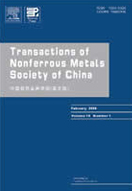Three-roller continuous setting round process for longitudinally submerged arc welding pipes
(1. Key Laboratory of Advanced Forging & Stamping Technology and Science, Ministry of Education of China, Yanshan University, Qinhuangdao 066004, China;
2. School of Mechanical Engineering, Yanshan University, Qinhuangdao 066004, China)
2. School of Mechanical Engineering, Yanshan University, Qinhuangdao 066004, China)
Abstract: In order to solve the problems of excess ovality and cross-section distortion of longitudinally submerged arc welding pipes after forming, a new three-roller continuous setting round process was proposed. This process can be divided into three stages: loading stage, roll bending stage and unloading stage. Based on the discretization idea, the mechanical model of the primary statically indeterminate problem of the longitudinally submerged arc welding pipes at the roll bending stage was established, and the deformation response was obtained. The simulation and theoretical results show that there are three positive bending regions and three reverse bending regions along the circumference of the pipe. The loading force of each roller shows growth, stability and downward trend with time. The error between the theoretical fitting curve and the simulated data point is very small, and the simulation results verify the reliability of the theoretical calculation. The experimental results show that the residual ovality decreases with the increase of the reduction, and the reduction of the turning point is the optimum reduction. In addition, the residual ovality of the pipe is less than 0.7% without cross-section distortion, which verifies the feasibility of this process.
Key words: longitudinally submerged arc welding pipes; three-roller continuous setting round; statically indeterminate problem; mechanical model; ovality; optimum reduction

